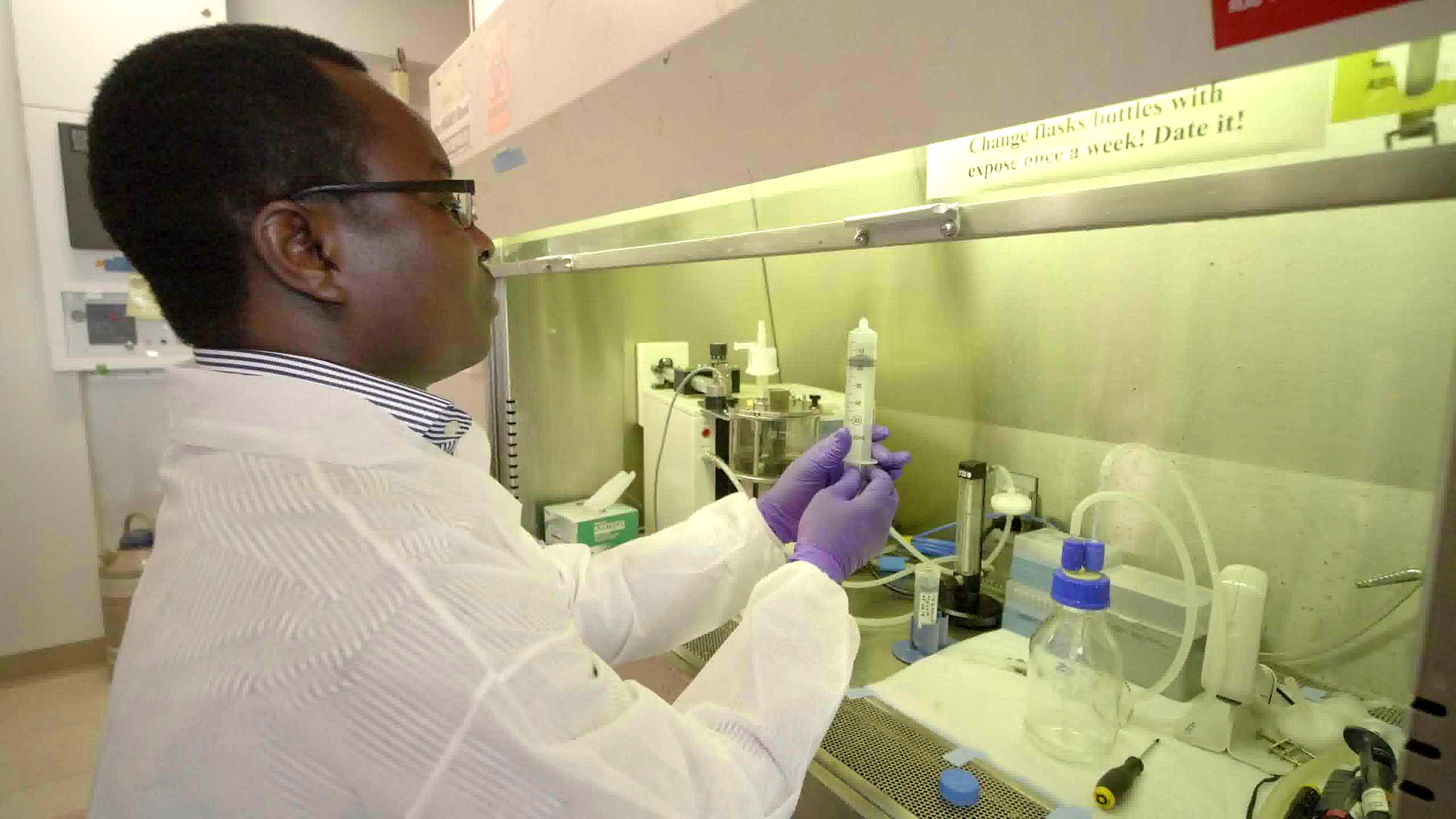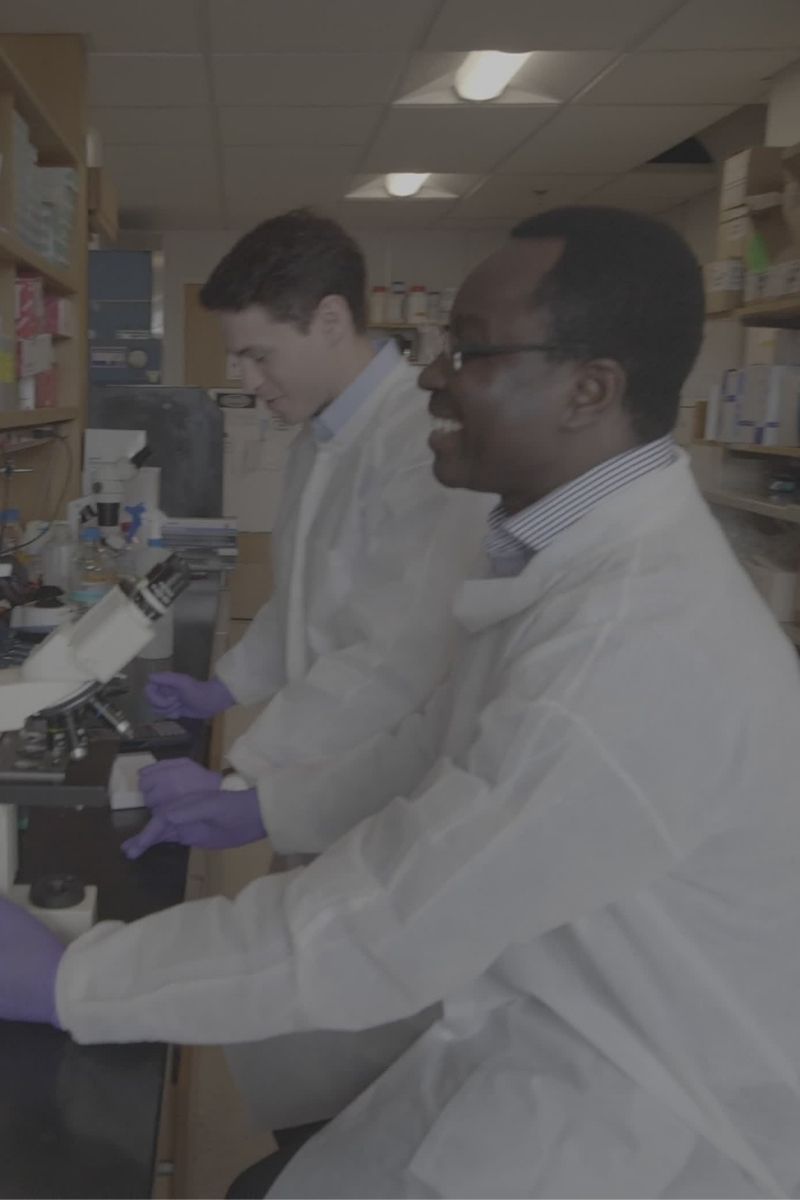
A goal of David Alagpulinsa, Ph.D., of Massachusetts General Hospital, is to contribute to a treatment that makes people with type 1 diabetes live like everyone—without T1D and its related complications.
David Alagpulinsa, Ph.D., a postdoctoral fellow in the laboratory of Mark Poznansky, M.D., Ph.D., focuses on immunoprotection for beta cells. Specifically, he is trying to stop beta cells that have been transplanted from becoming the target of immune attack, as well as prevent the immune system from destroying beta cells in the first place to cause type 1 diabetes (T1D). His laboratory discovered that the human protein CXCL12 serves to maintain a local immunosuppressed environment when it is expressed. He is taking two different paths to hopefully lead, one day, to cures for T1D.
Read the interview below to find out more about this research and the early-career scientist who is undertaking it.
JDRF: Can you describe your research and tell us what you’re trying to do?
Dr. Alagpulinsa: My research is focused on two important areas in type 1 diabetes. The first one: I’m trying to develop a strategy to protect transplanted beta cells from immune destruction. The second part: I’m trying to protect the beta cells from being destroyed in the first place.
Alginate: A substance that comes out of a particular type of seaweed. It is biocompatible, meaning that you can put it into the human body, and the human body doesn’t have a huge reaction to it.
For the first part, we are using an immune molecule CXCL12 to incorporate into alginate to encapsulate stem cell-derived beta cells. Stem cell-derived beta cells can be produced in unlimited quantities, so if there’s a strategy to protect them from immune destruction, you could probably produce a functional cure for type 1 diabetes.
Encapsulation: An advanced form of transplantation where a gel capsule is designed to keep beta cells protected from immune attack, while letting insulin out and letting oxygen and other nutrients in.
For the second part, I am using gene delivery strategies and drug delivery strategies to harness CXCL12 and increase it in the pancreas to attract stem cells and immune regulatory cells, to prevent the immune system from destroying the beta cells. We have seen that this treatment prevents type 1 diabetes in animal models.
JDRF: What are you hoping to accomplish in your postdoctoral fellowship and in your career?
Dr. Alagpulinsa: My main goal is to contribute to a treatment that will make type 1 diabetics live like everyone else. That could be a strategy that protects beta cells from immune destruction or a treatment that prevents complications that are associated with type 1 diabetes.
 JDRF: How did you get into type 1 diabetes research?
JDRF: How did you get into type 1 diabetes research?
Dr. Alagpulinsa: This is a very, very interesting question, because I never thought I would do type 1 diabetes research. My Ph.D. was in cancer biology. After my Ph.D., I started my postdoctoral work at Dana-Farber Cancer Institute. But within a few months, I realized that I was basically doing the same thing that I did for my Ph.D. Within six months, I had already started looking for more exciting research.
I saw a position in Dr. Klibanski’s lab, who is now the president of Massachusetts General Brigham. I applied for the position, and I wanted Dr. Poznansky, who is now my advisor, to review my documents. A few days later, he calls me and tells me he has this new project on stem cell-derived beta cells for treating type 1 diabetes. It was very exciting science. I jumped on it, and it really has opened me up to new opportunities. Now, I really love type 1 diabetes research, and I’m not going back.
JDRF: What happens in the course of a typical day in your research?
Dr. Alagpulinsa: I’m a morning person. By 4 a.m. to 5 a.m., I’m awake and I can’t sleep, so I tend to come to the lab relatively earlier than most people would do. So, between 7 a.m. and 8 a.m., I’m in the lab. I have specific journals that I like, and I follow them to see what is new in research. Then by 9 a.m., I start with my lab experiments and by 5 p.m., I’m done for the day. And the cycle repeats.
JDRF: What do you do when you’re not at work?
Dr. Alagpulinsa: I like to sleep a lot. Sundays in particular; I devote that to more sleeping. I like to read literature, like novels, poetry; I do a lot of writing. I also like to listen to music, and I watch soccer, as well. I follow the English Premier League. Very keenly.
Follow Dr. Alagpulinsa on his Twitter feed at @Alagsdave.